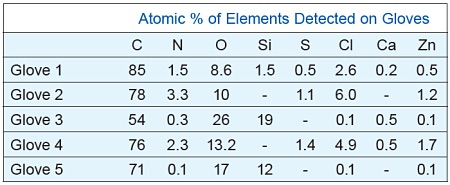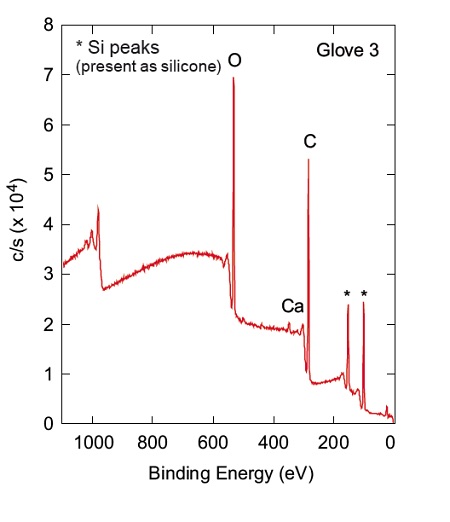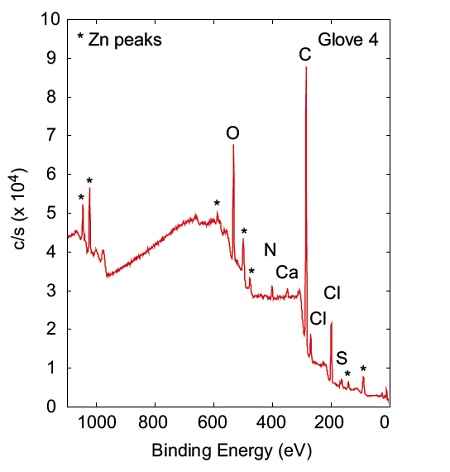XPS Analysis of Disposable Gloves
Home » XPS Analysis of Disposable Gloves
Many types of processing involve some degree of sample handling. In industries where cleanliness is critical to quality, disposable gloves are widely used to protect critical surfaces from inadvertent human sourced contamination. If you are relying on your gloves to provide a clean barrier between skin and a critical surface, you must be confident that the barrier itself is not a problem.
X-ray photoelectron spectroscopy (XPS), also called Electron Spectroscopy for Chemical Analysis (ESCA), provides a sensitive tool for quantitatively evaluating the cleanliness of the gloves that you depend on.
Figure 1 shows the results from the XPS analysis of five different brands of disposable gloves.

The table shows atomic percentages of all the elements detected on the five gloves. It reveals that varying levels of Si (present as silicone), S, Cl, Ca and Zn are detected on the gloves, in addition to the expected polymer components. This study demonstrates the importance of assessing materials exposed to products during manufacturing to ensure that they are not responsible for introducing further contamination.
Figures 2 and 3 show representative spectra obtained from Glove 3 and Glove 4. Silicon peaks are clearly observed from Glove 3 and Zn peaks are seen from Glove 4.


Would you like to learn more about XPS Analysis of Disposable Gloves?
Contact us today for your XPS analysis of disposable glove needs. Please complete the form below to have an EAG expert contact you.